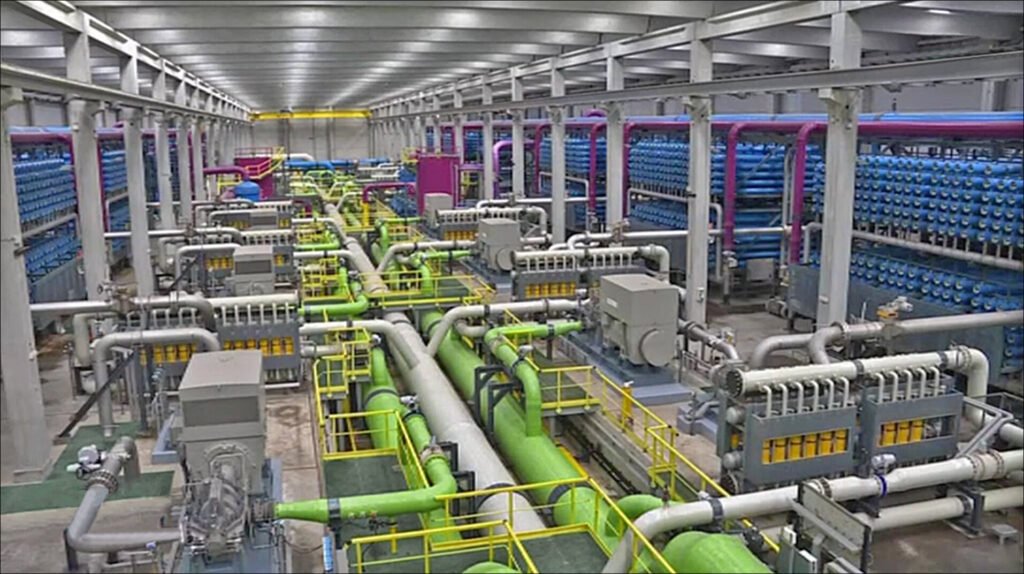
Desalting Theory

Desalination, or desalting, refers to processes that remove salts and minerals from saline water to produce fresh water suitable for human consumption or irrigation. As supplies of fresh water across the globe grow scarce while demand continues rising, desalination technologies have become increasingly critical for providing populations with adequate water.
Desalting technologies can be separated into two broad categories: thermal processes, predominantly multi-stage flash distillation (MSF) and multiple-effect distillation (MED), and membrane processes like reverse osmosis (RO). This article will provide an overview of the fundamental theory behind these desalination techniques.
Thermal Desalination Theory
Thermal desalination relies on phase changes to separate pure water vapor from saline feedwater. Salts and minerals have different phase change temperatures than water, allowing for their separation.
In MSF, the feedwater is heated under pressure to produce water vapor, which is condensed to yield desalinated water. The feedwater is heated in successive stages, each held at a lower pressure than the last, causing water to evaporate and condense repeatedly. Since the boiling point of water decreases with pressure, evaporating feedwater in sequential chambers with reducing pressures allows most of the water to flash evaporate with limited heating requirements.
MED also utilizes evaporation and condensation to desalt water, but does so with decreased energy usage by recycling latent heat. The feedwater flows through a series of tubes while hot steam condenses outside each one. The condensation process transfers heat through the tube walls to evaporate feedwater inside the tubes. The steam condensate and distillate water are collected separately after each stage.
Both thermal techniques require extensive heating apparatus and energy inputs, making their operation costs generally higher than membrane methods. However, thermal plants can handle higher salinity feedwater.
Membrane Desalination Theory
Reverse osmosis desalination utilizes semipermeable membranes and hydraulic pressure differentials to separate purified water from saline feedwater. By forcing saltwater against an RO membrane with an applied pressure over the inherent osmotic pressure, pure water molecules are sieved from the solution while contaminants are left behind.
RO membranes contain dense polymer structures with microscopic pores that allow smaller water molecules to pass while blocking larger salt ions. As feedwater is pressurized on one side of the membrane, pure water diffuses through to the other, known as the permeate. The concentrated salt solution left behind is discharged as brine waste.
The amount of pressure required for RO separation depends on the composition and salinity of the feedwater. The required applied pressure must exceed the intrinsic osmotic pressure generated by the salt concentration gradient across the membrane. RO membranes are designed to withstand high pressures with optimized water fluxes.
Membrane fouling and scaling must also be prevented through feedwater pretreatment and anti-scaling chemicals. Overall, reverse osmosis systems provide reliable, energy-efficient desalination with relatively low capital and operation costs. RO technology now accounts for over 60% of installed desalination capacity worldwide.
Future Outlook
Several emerging desalination technologies aim to build upon existing thermal and membrane techniques to improve freshwater affordability and recovery efficiency further. These advances include forward osmosis, membrane distillation, adsorption desalination, and capacitive deionization.
Additionally, renewable energy sources like solar, wind, and wave power may help reduce desalination plants’ overall energy demands and carbon footprint. Improved brine management solutions are needed to extract minerals and mitigate environmental impacts from hyper-saline discharge.
As desalination theory evolves, it will be integral in resolving global water scarcity issues and securing freshwater access for growing populations worldwide.